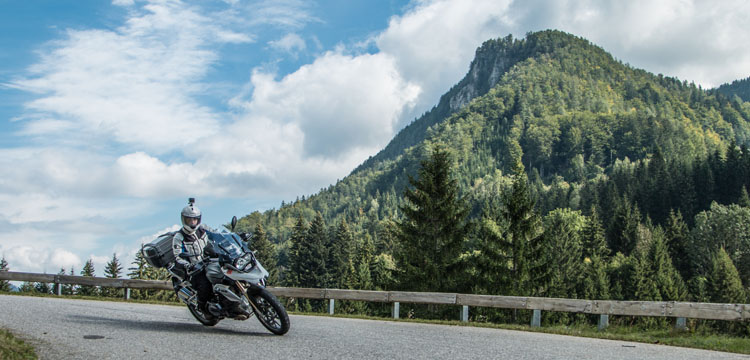
Helmet cameras may not be the safety risk in a crash that has previously been suggested. The BBC and UK Transport Research Laboratory (TRL) has performed impact tests on climbing helmets with cameras attached and found they didn’t increase the risk in a crash. They say that their test results may transfer to other types of helmets, such as motorcycles.
In Australia, police in some states have been fining riders for wearing cameras on helmets, claiming they are a safety risk and contravene the Australian Standards which do not allow any helmet modifications. The latter issue has been disputed by experts as a misreading of the rules and that as long as holes are not drilled in the helmet, sticking a mount for a camera or Bluetooth unit should be legal.
Impact tests on motorcycle helmets with cameras attached have been performed in NSW, but the results have so far not been released. Australian Motorcycle Council spokesman Guy Stanford says only “selective facts” have been leaked to them.
“At this stage we have assertions, no hard evidence and a side-dressing of biased opinion,” he says. “We’re also waiting for the ACCC to respond to an AMC complaint in the same area. The whole affair reminds me of a bunch of blokes standing around a bike making weird engine noises and speculating as to the cause of the noise, with guesswork from a little bit of knowledge but little understanding. The discussion frightened the poor owner into seeing his entire bank balance flash before his eyes, with the dread of having to sell his bike for next to nothing or pay an enormous repair bill. Turned out he had a small rock caught up in the fairing belly pan. Fears disappear when the facts become known.”

Meanwhile, the BBC study was initiated because of the increasing use of helmet cameras in their TV productions and Michael Schumacher’s accident in 2013, in which the mini-camera he was wearing of his ski helmet was implicated as a contributory factor to the severe head injury he sustained.
The BBC study points out that these action cameras are designed to be mounted on helmets, but the manufacturers say owners should do so at their own risk and should follow the helmet manufacturer’s instructions which say nothing should be attached to the helmet. So both the camera and helmet manufacturers have legally washed their hands of the issue.
In the BBC test, cameras were mounted on the front and sides of a variety of climbing helmets using the sticky mounts or head bands. The BBC says the results are “a little surprising. We had anticipated that the placement of a solid object on the helmet would not only provide a single point of impact on the helmet, but would also significantly increase the rotational / acceleration forces on the head when it ‘caught’ or impacted on inclined surfaces.
“The results were expected to be an increase in the transference of these impact forces to the head, potentially sufficient to exceed, or ‘fail’, the injury threshold of the standards. But this wasn’t the case. In fact, in not one of over 70 tests on various helmet types, mounting types or mounting positions did the presence of the camera cause the helmet to ‘fail’ the injury threshold standards. And this wasn’t solely because the camera broke away on impact (as claimed likely by the manufacturer), because this only happened in approximately 40 pert cent of tests.



![77-399-XX[4]](https://da28rauy2a860.cloudfront.net/roadrider/wp-content/uploads/2024/06/14091929/77-399-XX4-326x245.jpg)